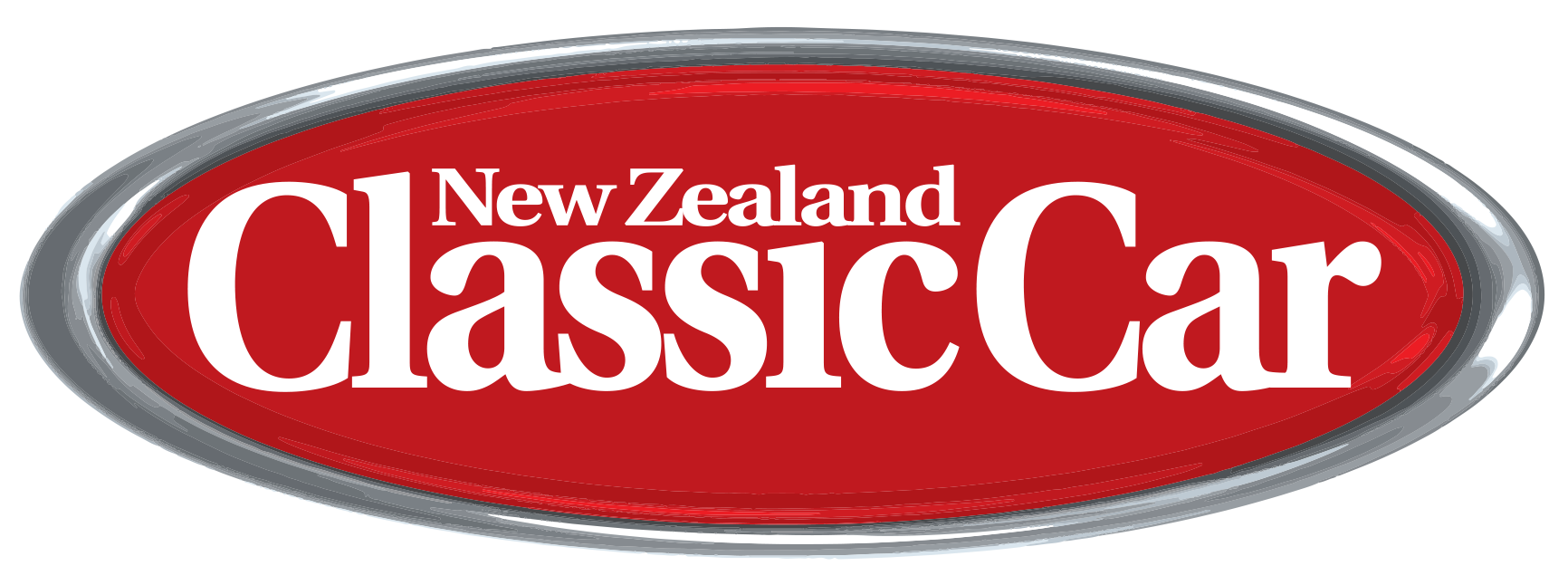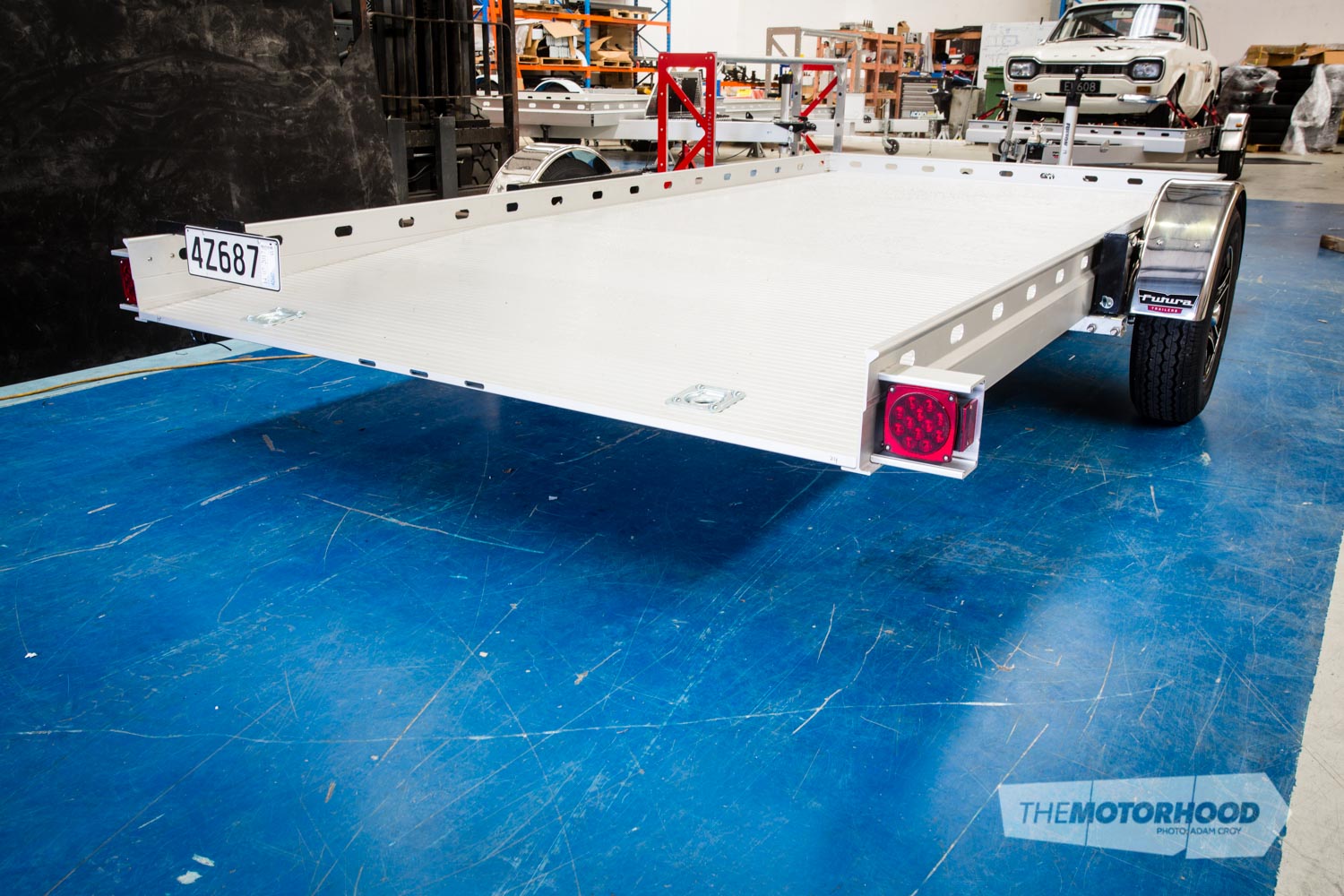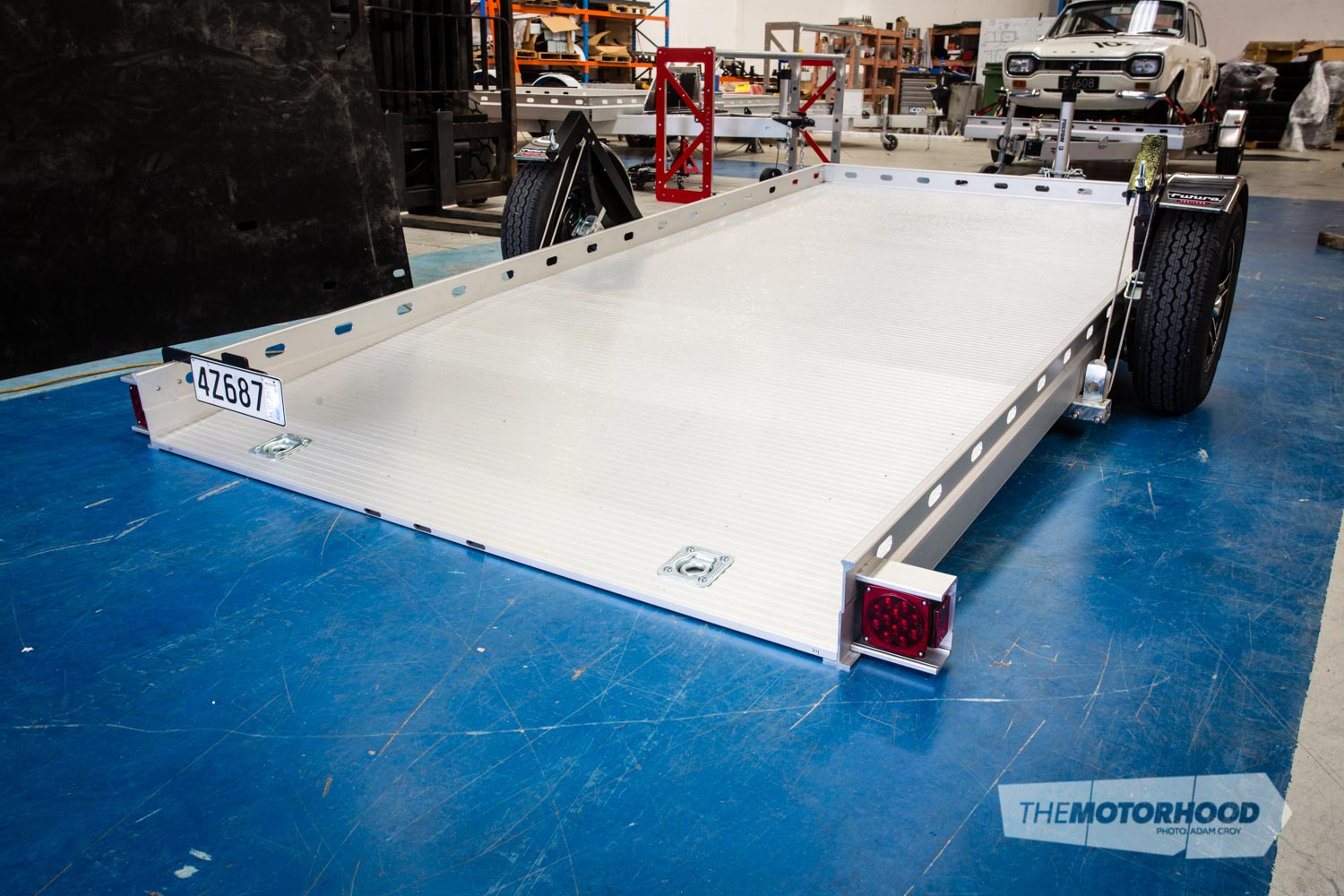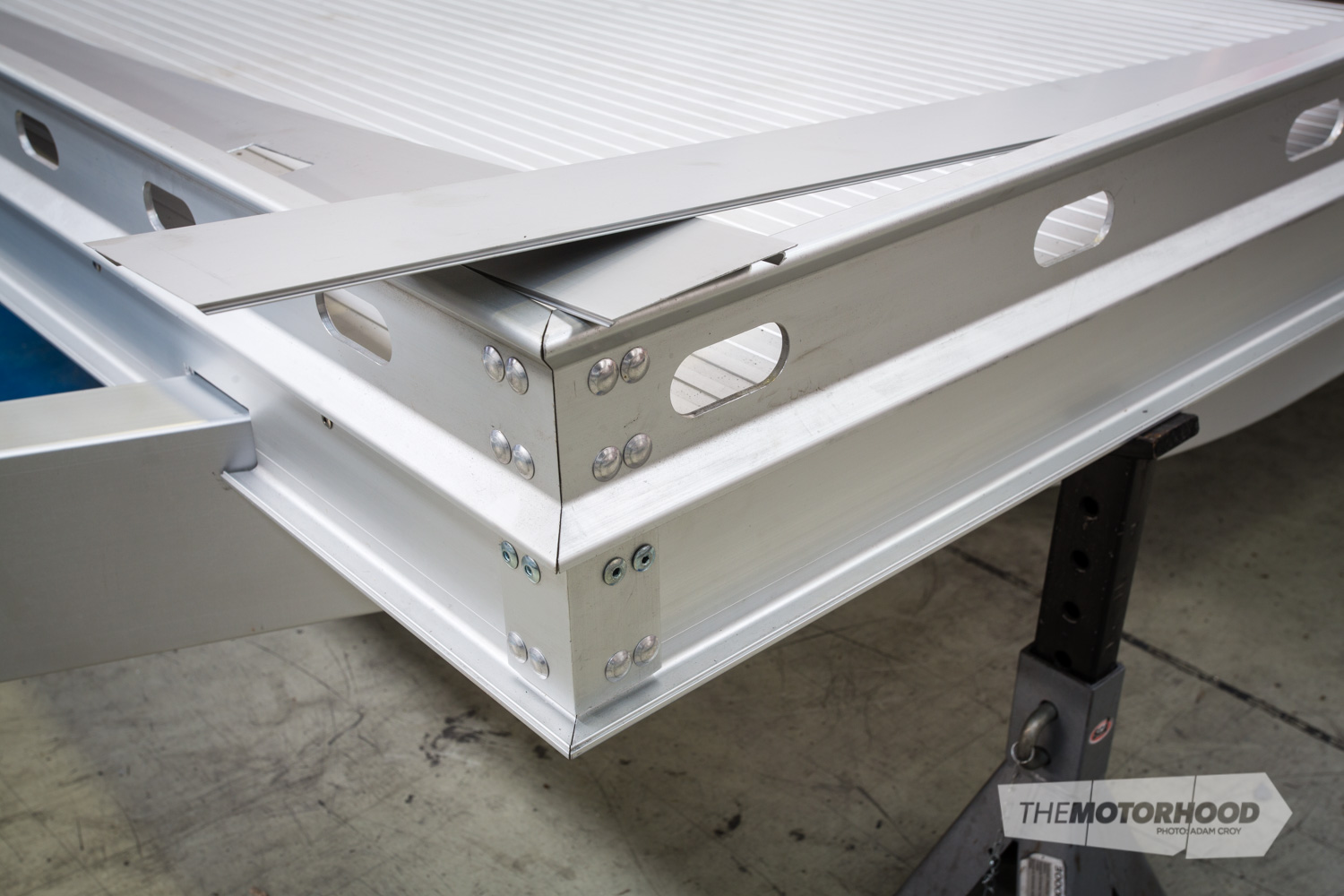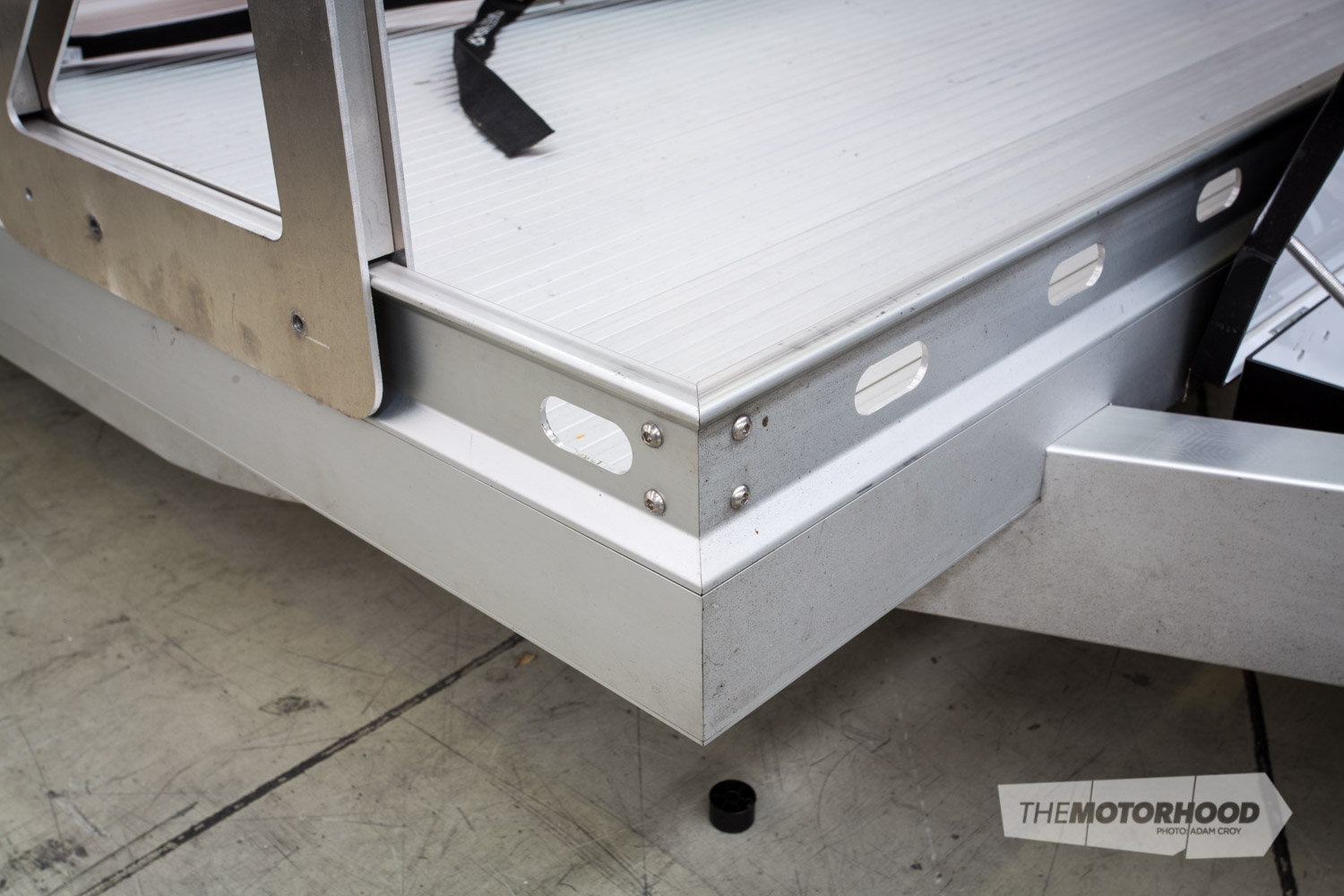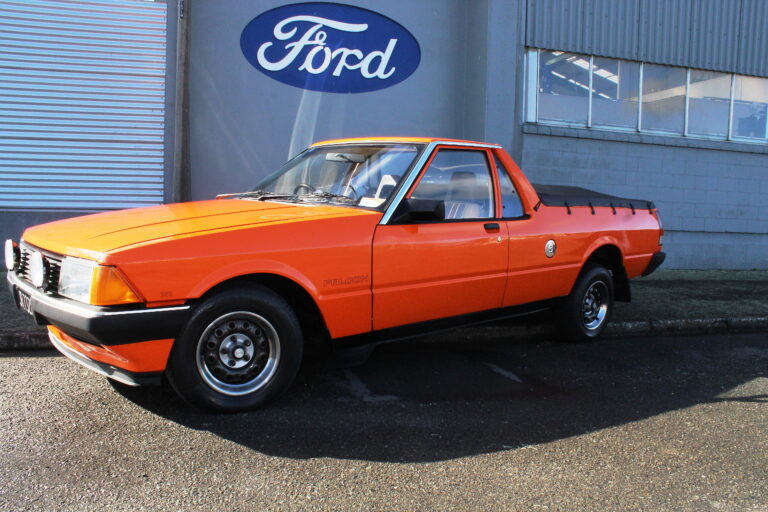We see plenty of car trailers. Some are good, some are bad, and others downright terrible. But when a Futura Low Loader rolled into the studio recently, it had us all in amazement. We were so impressed by it in fact that we had to find out exactly how it worked. After all, it’s not every day you see a full-race-spec GT3 Porsche with bugger all ground clearance just drive on and off a trailer, at least not without massively long ramps and a whole lot of white knuckles from everyone involved.
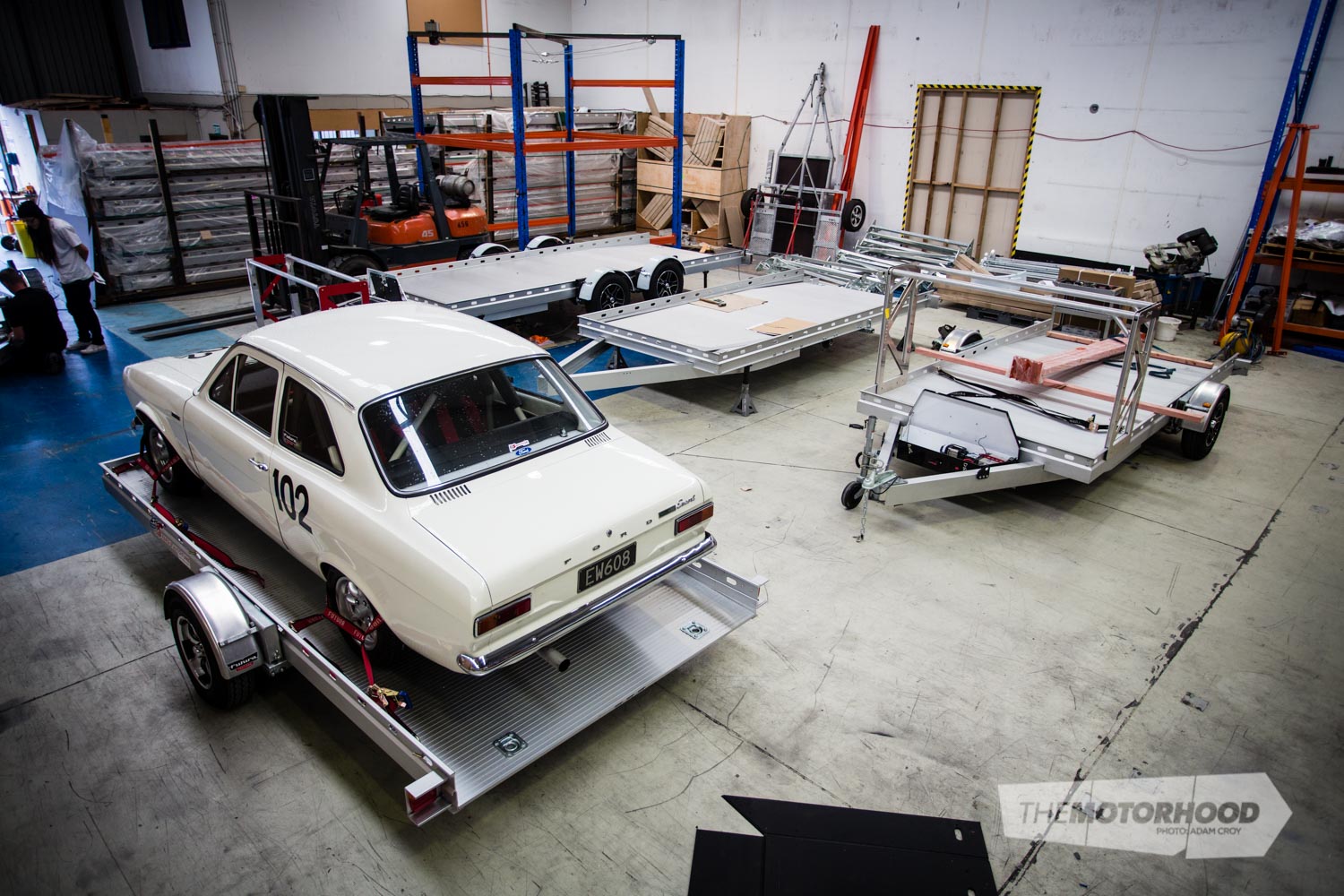
The Low Loader trailers are the brainchild of Glen Reid, and are a totally original, and patented, design that they have been producing since 2010. That has evolved into these brand-new aluminium Low Loaders, which have been two years in the making. This mirrors the fact that, until earlier this year, Glen’s company, Futura Trailers, was known as Renegade Trailers, manufacturing more conventionally styled trailers. This unbelievably simple and functional Low Loader technology is their new direction, and it sure seems to be working.
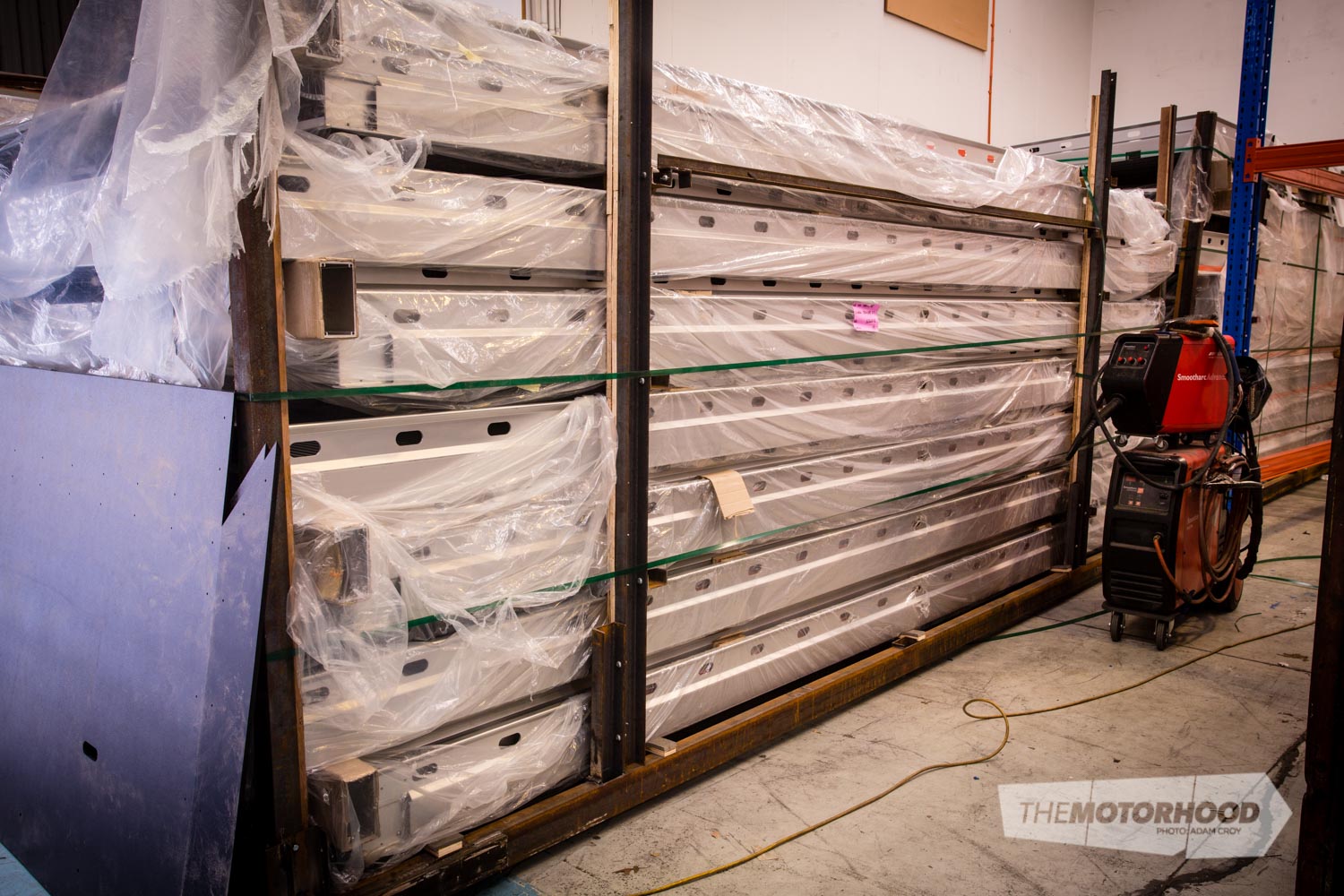
This can be seen in the stack of aluminium trailer beds, waiting to be assembled into a complete trailer. These are manufactured and anodized overseas from 6005 aluminium, and Glen has good reason for this, as he tells us that 6005 aluminium is not readily available in New Zealand. “Locally, you’d normally get 6061 or similar, which is an architectural grade used for windows or doors, etc.,” Glen says.
The design of the aluminium decks also comprises the trailer chassis, with a tapered floor allowing a very generous approach angle for even the lowest vehicles. Interestingly, there is no welding involved in the assembly of a Low Loader trailer. In the original design, Glen wanted to have the frame welded, but was talked out of this after experts advised him against it. “Welding softens the area, making it prone to cracking. [The material] would have needed to be thicker in the welded area, adding weight and cost, and it would lose the anodizing.”
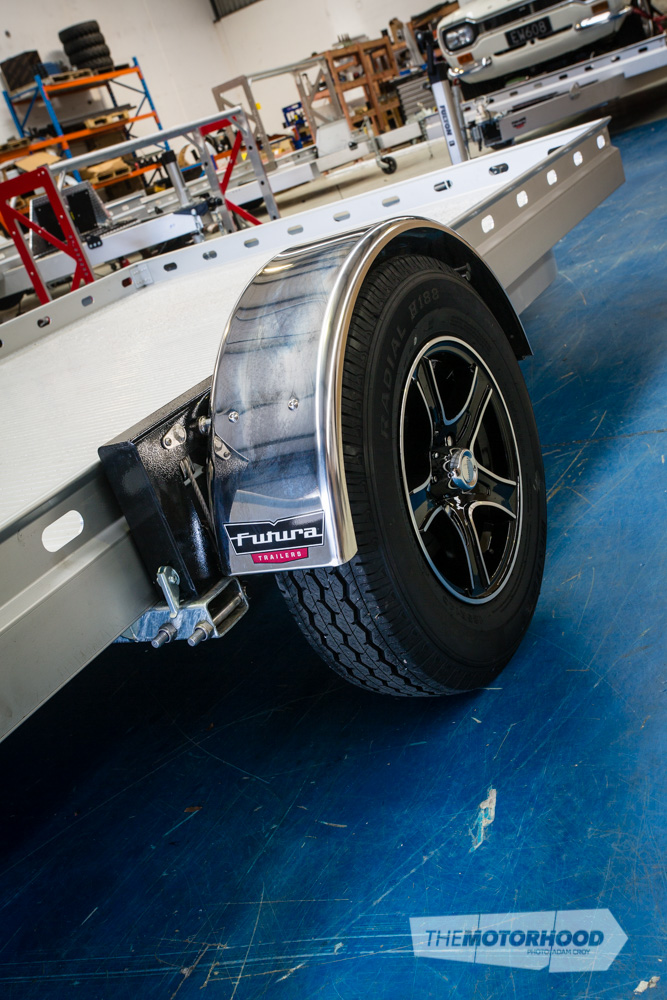
The decks are also designed so everything can be bolted on, from the chunky aluminium drawbar, through to locally manufactured ‘lifting arms’ — the secret to the Low Loaders’ effectiveness. The lifting arms contain inboard leaf springs, and have been very cleverly designed so that they are interchangeable from left to right — this means that Futura Trailers only order in one style of lifting arm, and this style will service each and every one of their trailers.
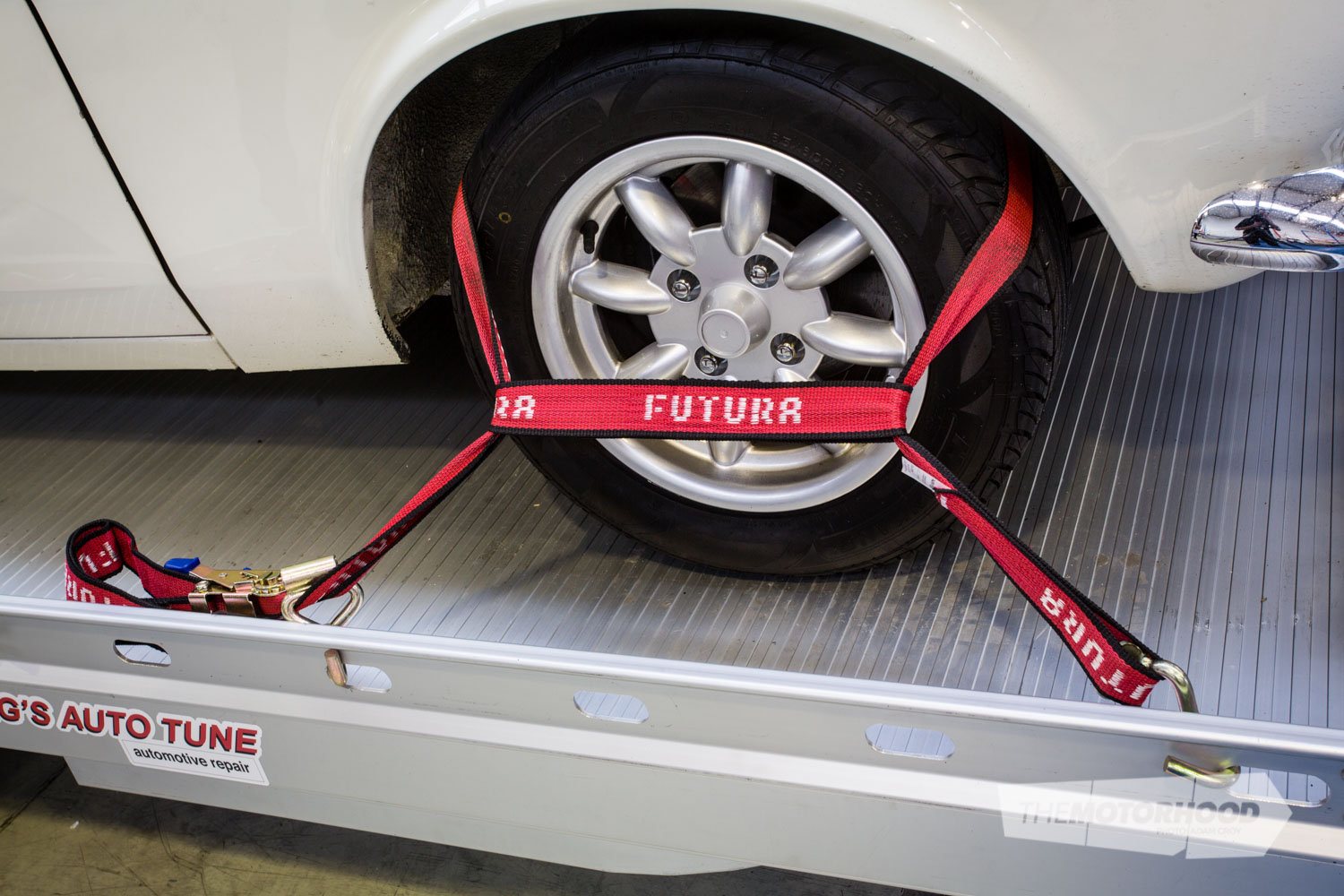
Deck design has also taken load security into consideration, with a new tie-down system, made by local manufacturer Aerofast. This includes a separate ‘floating’ hook, as well as an additional double-loop tie, ensuring that the tie-down system will always be perfectly placed, and the vehicle will remain secured until the system is released.
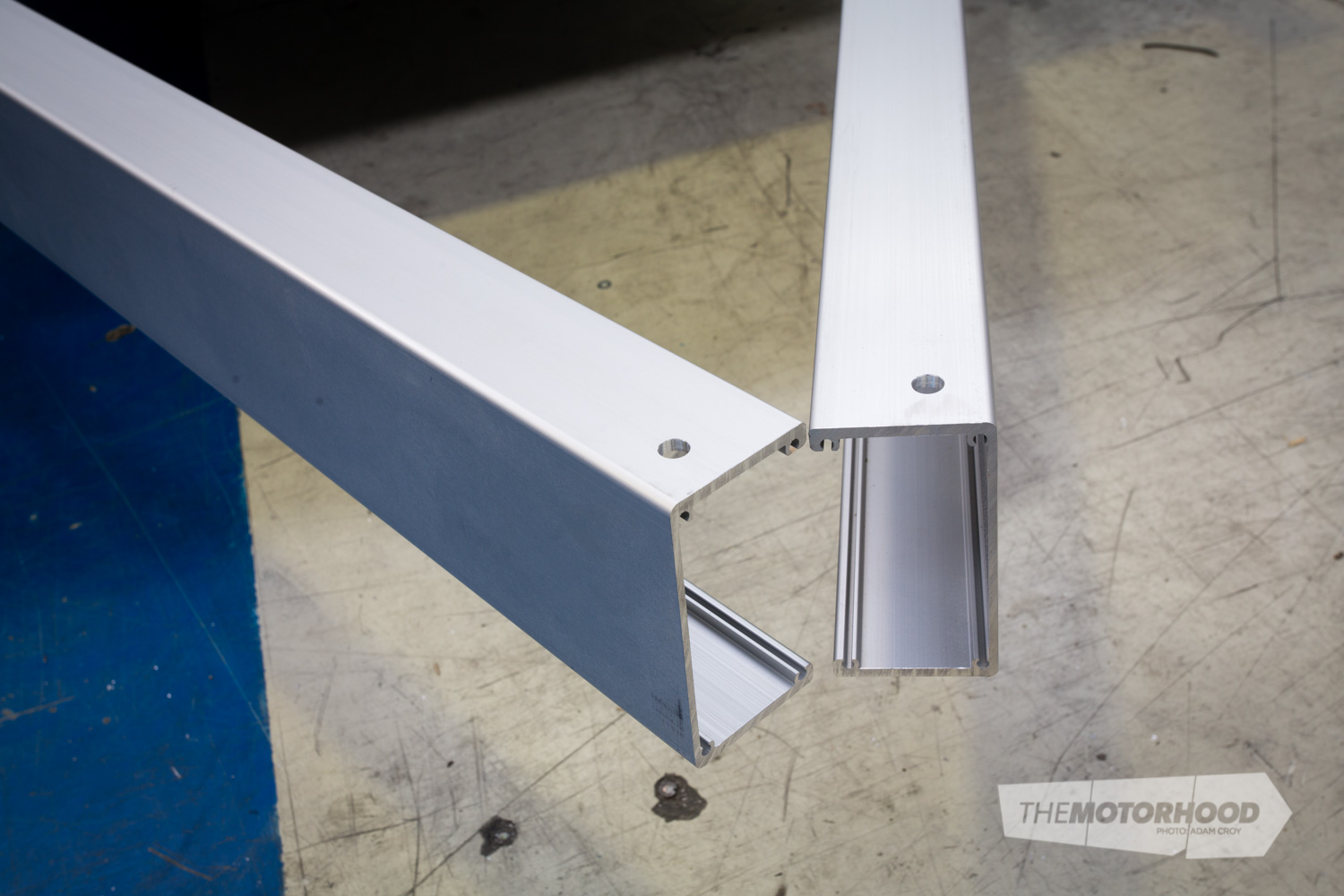
Throughout the trailer, nothing is hollow — everything is solid. This means that when it is all bolted together, it’s bolted solid surface to solid surface. “We can torque everything up, and know it will stay torqued,” Glen explains.
Wiring is then installed, running along the channels pressed into the frame’s exterior rails, before the clip-on covers are fitted. This gives an aesthetically pleasing appearance of a hollow extrusion, while keeping wiring hidden, free from contaminants, and easily accessible.
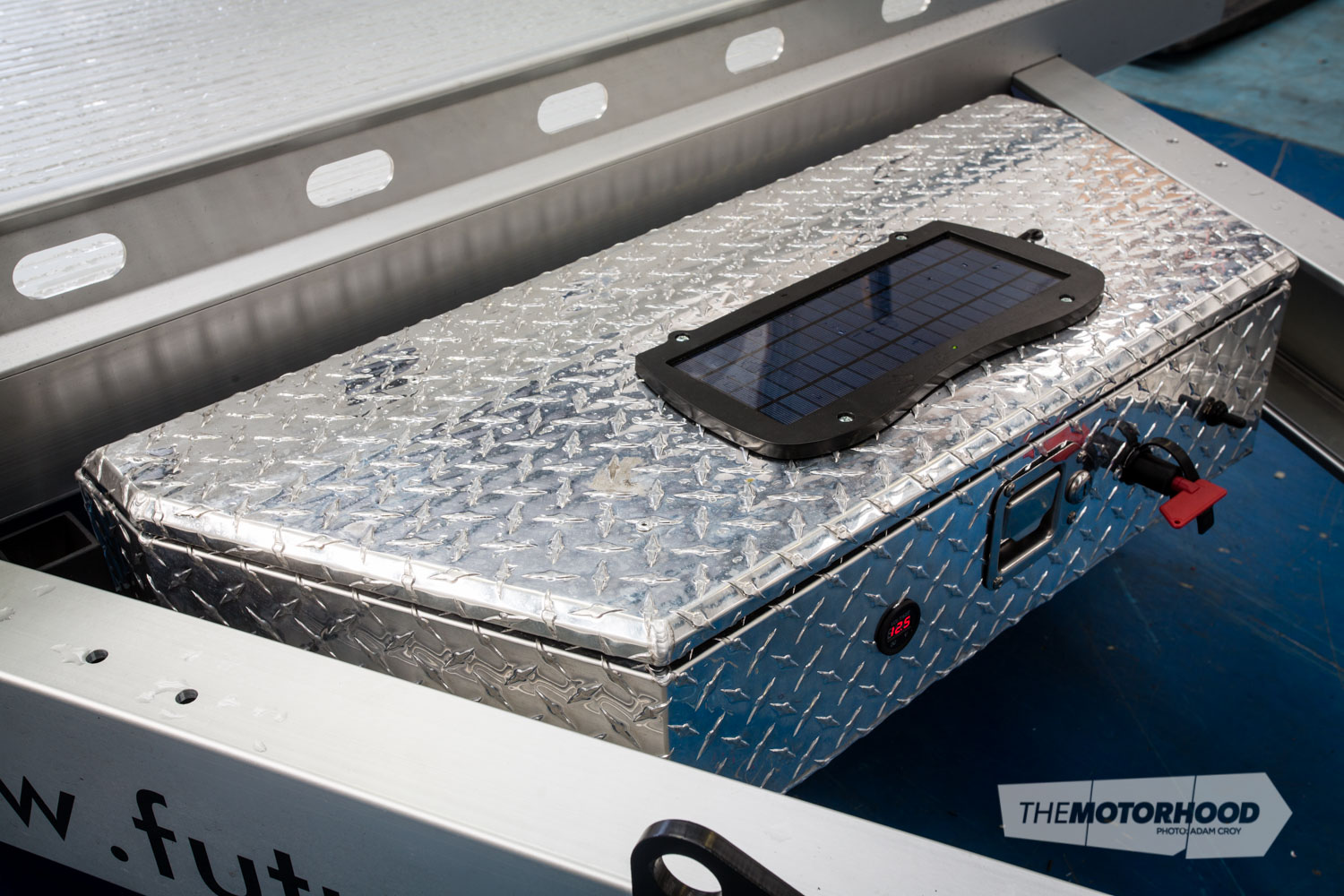
The wiring is treated with such importance because it comprises the central nervous system of the entire trailer. The electric winch system means the trailer can be raised and lowered without the need for a complex, heavy, and expensive hydraulic system. The 12V battery is connected to a trickle charger that runs off the tow vehicle’s tail lights, ensuring the winch remains charged when in use, and a solar charger ensures it charges up when it’s not in use — perfect for those who may wish to permanently park a car on their Low Loader trailer.
A steel crossmember is made up with a box to house the winch, battery, and electrics. While the trailer itself is almost entirely aluminium, steel has been used for the axles and areas that will be subject to load, for reasons that should be obvious.
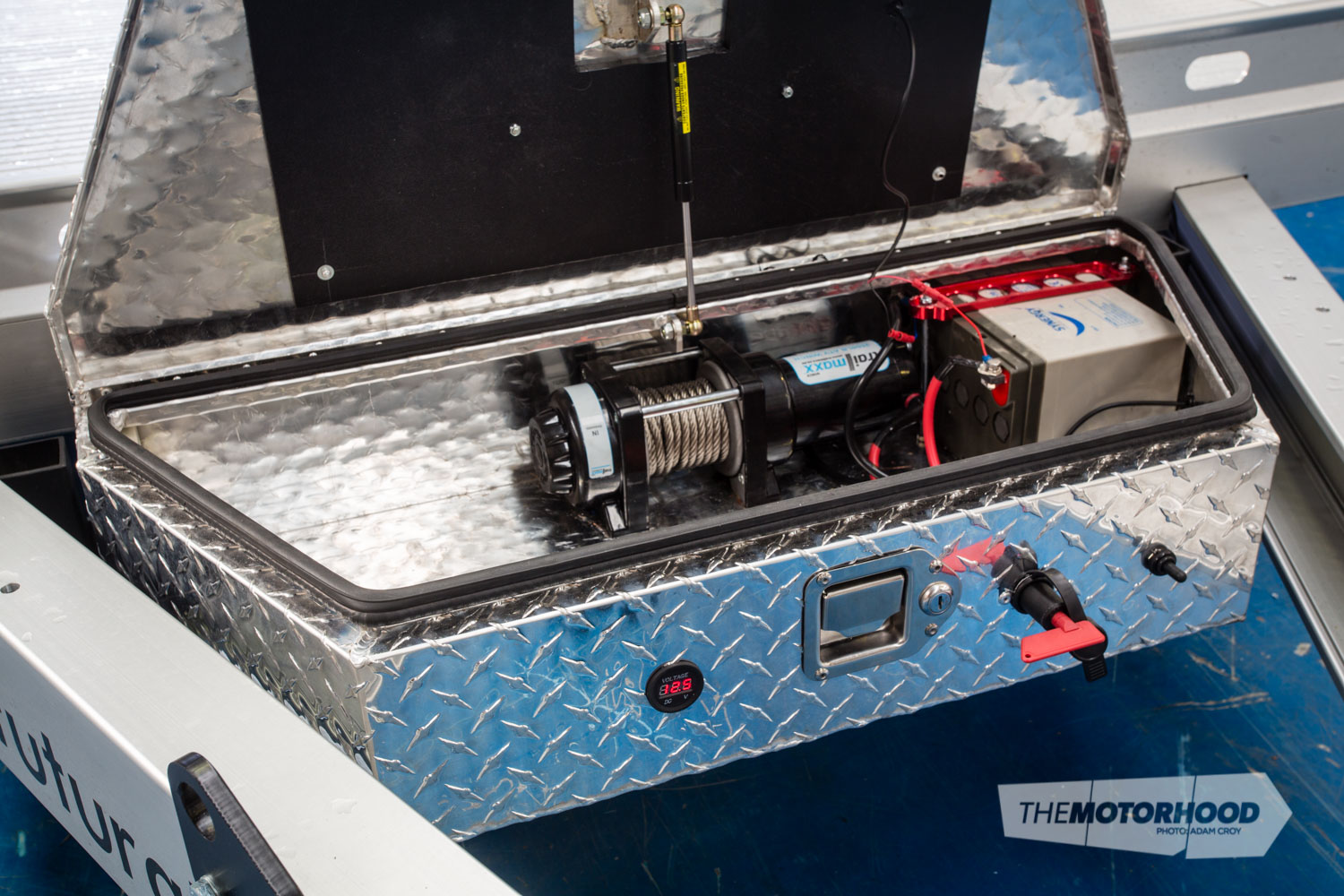
A brake controller, which can be wired into the trailer’s electric brakes, is also an option. The three-axis accelerometer measures lateral, longitudinal, and vertical movement, and can modulate the trailer’s braking pressure as needed. If the driver suddenly stands on the brakes, the accelerometer detects the increase in the rate of deceleration, and subsequently increases the trailer’s braking force.
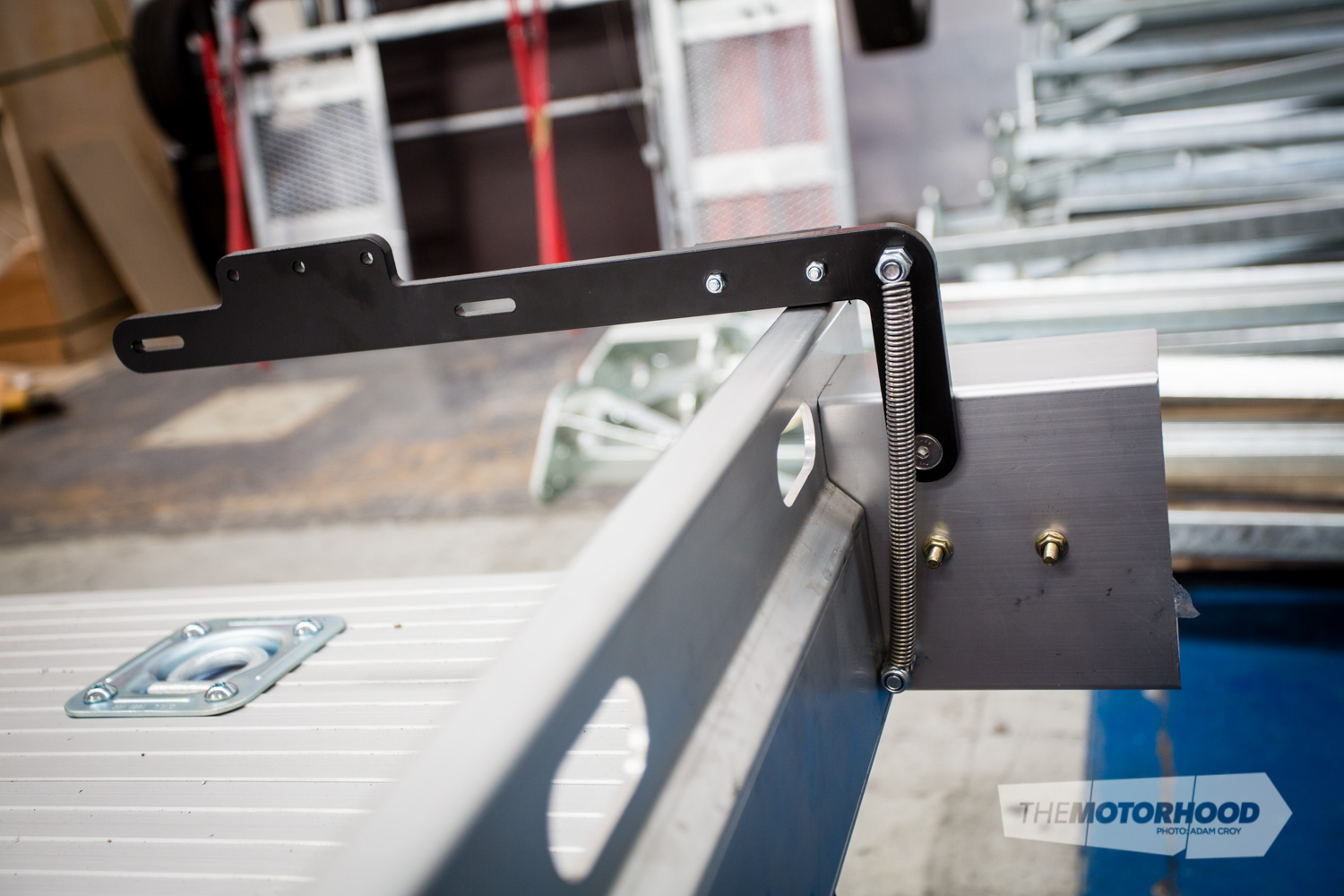
The Low Loader is finished with stainless mudguards, made in Rotorua, and a fold-out laser-cut number plate bracket — a small detail, but something that speaks volumes about the attention to detail in the trailer’s design. With the variable ride-height, a conventional number plate mount couldn’t be used, leading Glen to design the current fold-out unit.
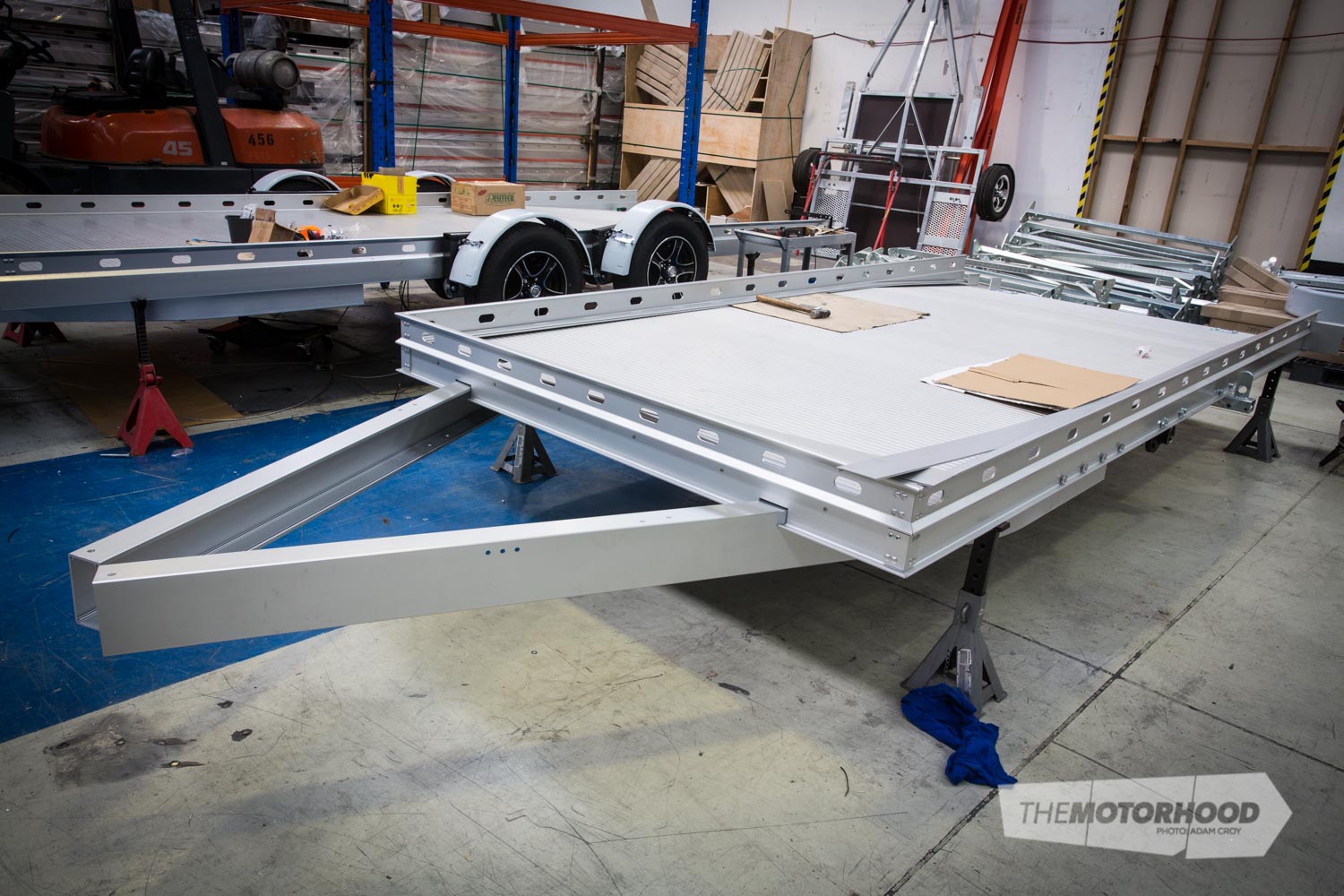
The Low Loader trailers are currently available in single-axle or tandem configuration, with options such as a stone guard, tyre rack, electric recovery winch, and the aforementioned brake controller available. A covered option is also in the works, Glen tells us, although that’s still awhile away.
Futura Trailers have already begun fielding orders and enquiries from the USA, and we’re not surprised — if you’re in the market for a transporter trailer, you’ll struggle to match the Low Loader’s price point, quality, and functionality. Glen mentioned he will be bringing Low Loaders abroad to display at SEMA and the PRI (Performance and Racing Industry) Trade Show, with an aim to expand manufacturing to Texas and possibly Australia.
In the here and now, though, they’ve already begun to take off locally, gaining favour with race drivers, show car owners, and vehicle-oriented businesses. For full technical information, you can visit futuratrailers.com, phone 021 918 800, or email [email protected].
